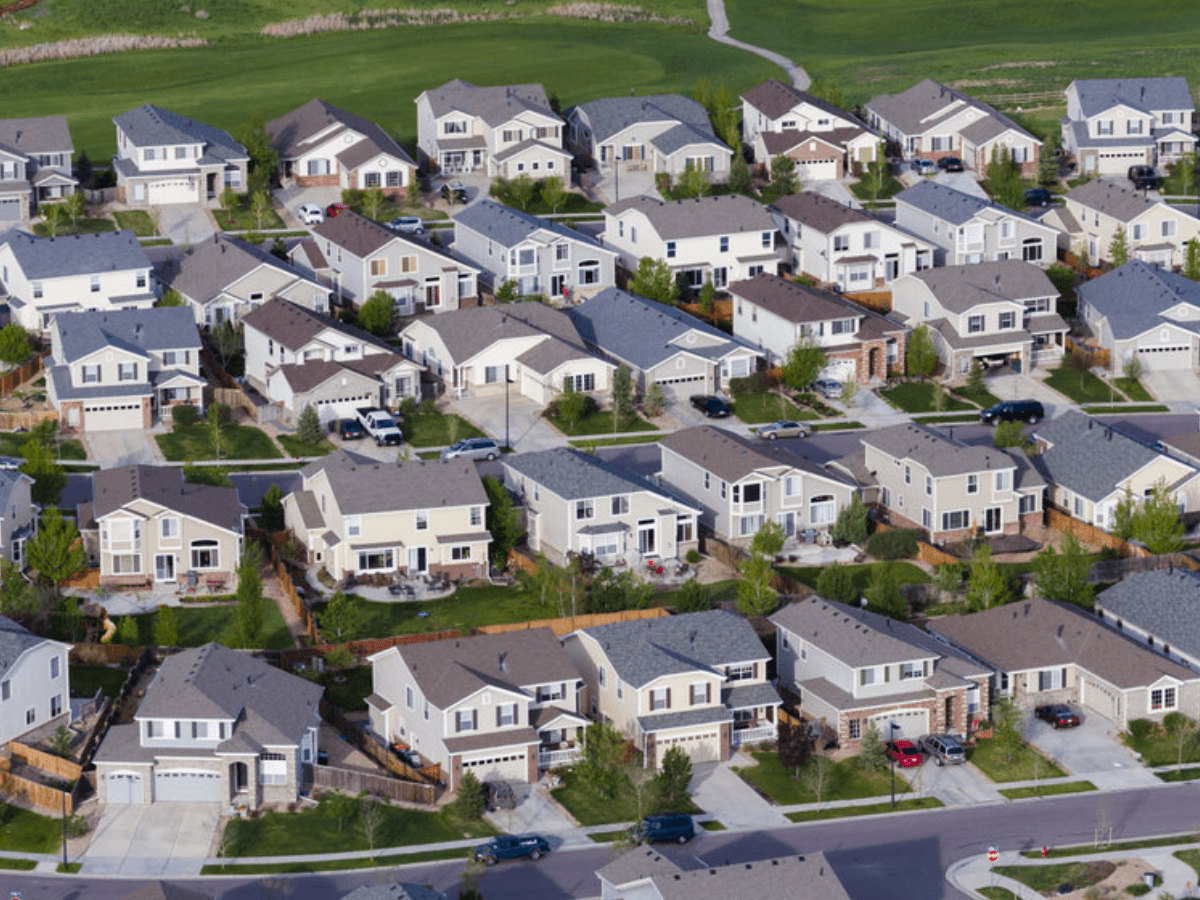
Homebuyers Are Thinking Smaller. Why the American Dream Is Shrinking by the Square Foot
“Size matters,” as the saying goes. But right now, affordability matters more.
Across the U.S., first-time buyers like Walker are scaling back their expectations. With high interest rates, skyrocketing home prices and tight inventory, many are realizing that the dream of a spacious, detached home is drifting out of reach. In response, they’re opting for smaller, more affordable homes and builders are meeting them halfway.
“Buyers are boxed in,” says Carl Reichardt, managing director of homebuilding equity research at BTIG. “One way to offset higher input costs is to just use less of the input—and that means building smaller, simpler homes.”
Builders Pivot to Meet Demand
After the pandemic initially drove interest in larger homes (more space, more home offices, more everything), the average size of new single-family homes has started to shrink again. According to Realtor.com, the median square footage for newly constructed homes in March 2025 was 2,034, down 4.7% from March 2020.
It’s a noticeable shift. D.R. Horton, one of the country’s largest homebuilders, said sales of smaller floor plans have surged. Townhomes and duplexes now make up about 17% of homes sold in their latest quarter, the highest share since 2006. These units often have the best of both worlds: more space and privacy than an apartment, but a much lower price tag than detached homes.
Even so, most buyers would still prefer a detached home if they could afford it, notes Jessica Hansen, senior VP at D.R. Horton. “But townhomes with a two-car garage and a small backyard? That can look pretty good when the alternative is renting.”
Downsizing Becomes the Norm
Downsizing isn’t just for retirees anymore—though they, too, are feeling the pinch. Navona Hart, a broker in Virginia, says many older buyers start their search expecting to find a 2,000-square-foot home for retirement. “But once they see the prices, they often settle for something closer to 1,500 to 1,700 square feet,” Hart says. “It’s not what they pictured, but it’s what they can afford.”
A recent survey by John Burns Research and Consulting backs that up. Nearly a quarter of 1,200 respondents said they plan to buy homes between 1,251 and 1,750 square feet, in a sign Americans are adjusting expectations to fit today’s reality.
Why Size Isn’t Everything
The shift to smaller homes isn’t just about buyers stretching their dollars. Builders are feeling the pressure too. With input costs rising—everything from lumber to labor to tariffs—cutting back on square footage can be a smart business move. Smaller homes not only reduce construction costs but can still deliver strong margins, especially when builders scale them efficiently.
KB Home, another major builder, says its average home size remains around 2,000 square feet, similar to years past. But the real sign of today’s financial stress? Buyers are choosing practical, value-driven features—like kitchen islands or built-in storage—over more luxurious upgrades.
“If there’s an indication of the affordability pressures, it’s that they’re staying with value features, not sizzle,” said KB CEO Jeffrey Mezger.
The Hidden Costs of Going Small
But this pivot doesn’t come without trade-offs. For companies that furnish or finish homes—like kitchen cabinet manufacturers—the trend toward smaller homes means less business. In February, American Woodmark, a cabinet maker, noted a clear drop in the number of cabinets going into new homes as builders try to cut costs.
There’s also the question of how small is too small. At some point, buyers may wonder why they should buy a cramped house when an apartment could offer more perks—like a pool, gym or better location—for less money.
“There’s been a steady, consistent migration to downsize,” said Tyler Batory, equity research director at Oppenheimer. “But at some point, you hit a floor. People still want their homes to feel like an upgrade from renting.”
Looking Ahead
With mortgage rates currently hovering near 6.86%, affordability isn’t likely to improve overnight. As long as prices stay high and supply remains tight, smaller homes will likely keep gaining popularity—especially among first-time buyers trying to get a foot in the door.
And while the American dream might look a little different these days—maybe with fewer square feet and a tighter layout—homeownership still holds its appeal.
“It may not be huge,” Toi Walker said of her new home, “but it’s mine. And for now, that’s more than enough.”



